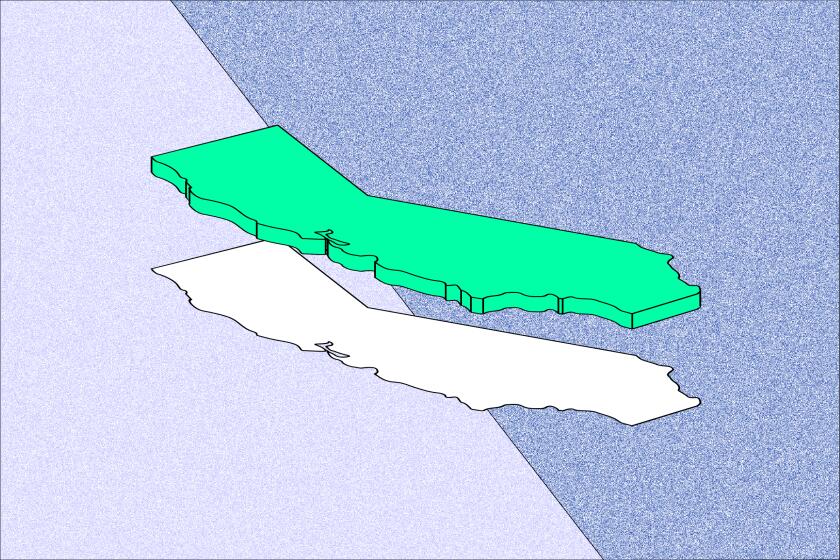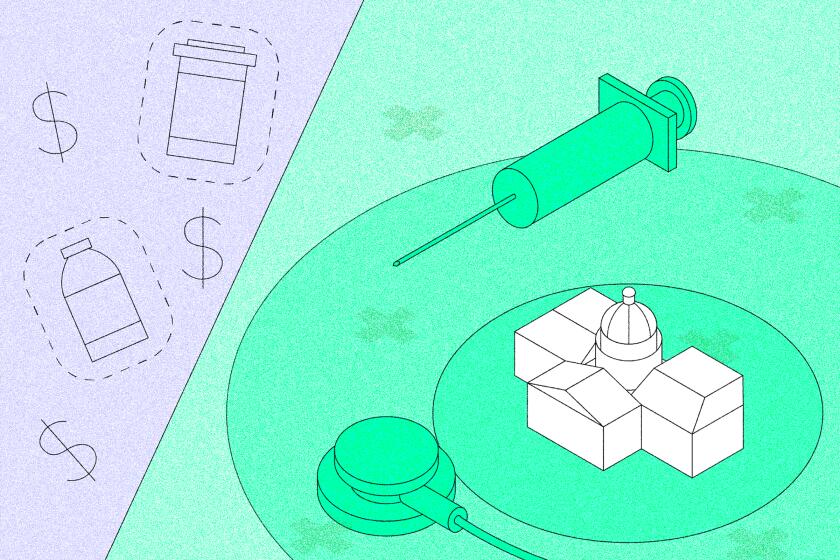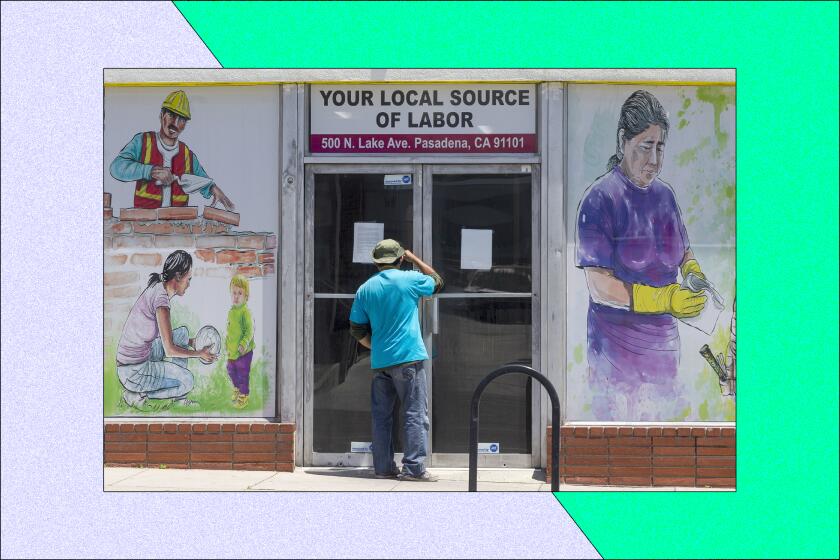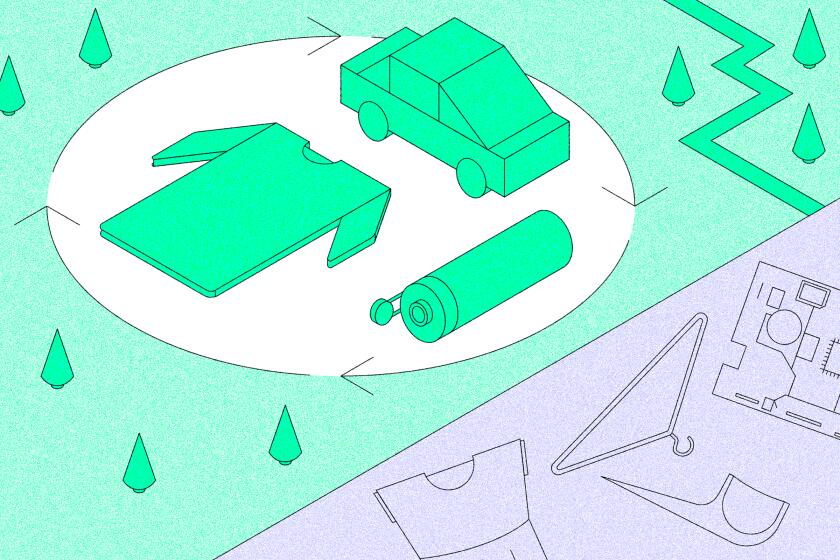To solve homelessness, California should declare a right to housing
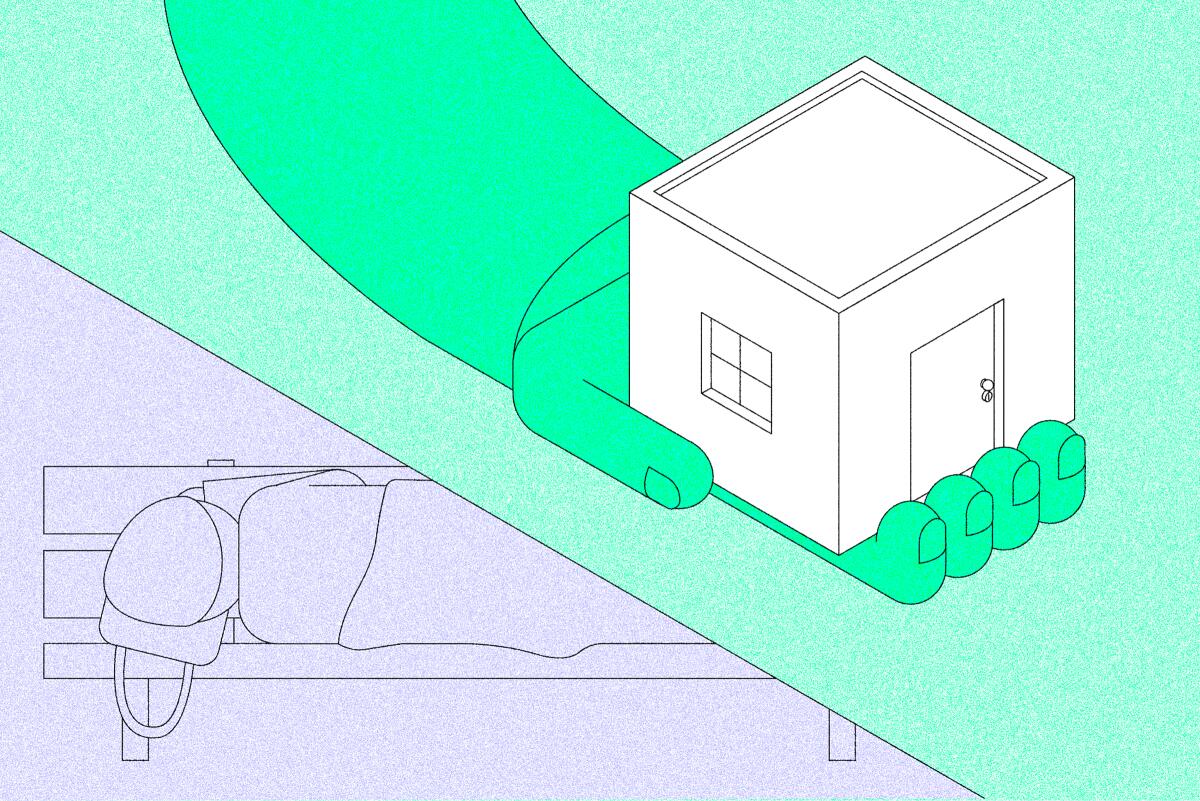
- Share via
Housing should be a human right, ideally one enshrined in the United States Constitution. But that shouldn’t stop the city of Los Angeles from adopting such a right. In fact, the City Council has asked city agencies to research the idea. It’s an idea whose time has come.
Across Los Angeles, homeless encampments sprawl on sidewalks not far from million-dollar condos. Among the people in the city who do have housing, most are renters and 50% of those spend more than half their income on rent and utilities.
A right to housing has a simple but powerful underpinning: The government should ensure that everyone has an adequate home. Housing, healthcare and food should all be human rights guaranteed under the law.
What would this housing look like? Gary Blasi, a UCLA law professor emeritus who has spent most of his career advocating for homeless people, describes it as a place where you can have “autonomy, dignity and privacy.” Specifically, that looks like an apartment — a room in an apartment, house or hotel or motel, with a door, a lock on the door and a window.
In fact, it’s time to stop talking about “beds” for homeless people — unless they need a bed in a hospital or a residential mental health facility. Homeless people need homes.
In January 2020, the Los Angeles Homeless Services Authority estimated that there were about 66,000 homeless people in the county and around 41,000 in the city.
A right to housing won’t completely alleviate the need for temporary shelter for homeless people. But as permanent housing becomes more available, the less time people will need to spend in shelters.
This is not a right to shelter. In fact, a right to shelter would siphon off money, time and energy all better spent creating and preserving housing for poor people, including homeless individuals. Shelter is not cheap. Even setting up a safe campground for homeless people with security, food, restrooms and service providers can cost more than $2,500 a person per month. You could get an apartment for that.
Nor is this a revolutionary idea. President Franklin D. Roosevelt spoke of it in his 1944 State of the Union address. The United Nations has recognized a right to housing for decades. The treaty into which it was codified was signed by the U.S. — but never ratified. Finland, Scotland and South Africa all have implemented a right to housing, with worthy if varying results.
A right to housing doesn’t mean that the government gives everyone free housing. A right to housing would offer protection against forced eviction and legal counsel to people facing eviction. It should be used to incentivize the creation of affordable housing — and to prioritize the provision of housing over parochial land-use and unnecessary environmental impact reviews and arguments, grounded in NIMBYism, that are often used to block the development of multifamily residences and housing for homeless people.
And it should guarantee the right to a housing subsidy if a person qualifies for it — the same way people get assistance buying food in Los Angeles County under the CalFresh program (food stamps) if they need it. That kind of assistance is, indeed, expensive and could come only from expanding the housing voucher program known as Section 8 that is administered by the U.S. Department of Housing and Urban Development. A Section 8 voucher holder pays 30% of his or her income, whatever amount that may be, toward monthly rent, and the voucher covers the rest. There are maximum caps on rental amounts that the vouchers will cover. (Homeless people usually receive county general relief — a pittance at $221 a month — and pay 30% of that.)
Nationally, about 1 in 4 people who qualify for federal housing assistance receive a voucher. The need here is even more desperate — as few as 1 in 10 city residents who qualify actually get vouchers. The city’s Housing Authority holds 58,000 Section 8 vouchers. In 2017, when the long-closed waiting list for the vouchers reopened, 188,000 people applied. The city held a lottery and chose 20,000 to put on a waiting list. About 7,000 remain on the list, which is once again closed to new applicants.
President Biden declared in his campaign platform, “Housing should be a right, not a privilege.” His platform also included a commitment to fully fund federal rental assistance. He should work to make that happen. His administration has already proposed that an additional 200,000 vouchers be distributed across the nation. But the city of Los Angeles could use three times that. Douglas Guthrie, chief executive of the Housing Authority, estimates that about 600,000 households would qualify today for a Section 8 voucher, meaning they earn no more than 50% of the area median income.
The city is already getting $780 million this year in Section 8 funds. If the federal government fully covered Los Angeles — which gets the second-largest allocation of Section 8 vouchers in the country — that would mean about $6 billion to $8 billion in new vouchers.
Large as that is, it would also be one of the most worthwhile investments the federal government could make. For decades, federal housing policy has benefited homeowners — through the mortgage interest deduction, for example — far more than renters. Why shouldn’t renters get help from the federal government?
Support for renters is one thing. Housing supply is another. Of those who’ve made it through the Section 8 gantlet, about 45% are still looking for either a willing landlord or an affordable unit.
So, officials have to find ways to incentivize the creation of more housing. For example, the city could offer nonprofit developers of affordable housing the right of first refusal to buy properties in foreclosure. The authorities should also open neighborhoods zoned for single family homes to more multi-unit developments — and perhaps abolish single-family zoning altogether. That doesn’t mean high-rises next to ranch houses. It means small apartment buildings and town home developments.
One promising approach is outlined in California Senate Bill 679, which would establish a Los Angeles County Affordable Housing Solutions Agency to fund renter protections and the production of new affordable units. Among the tools the agency could use would be parcel taxes, bond measures and a document transfer tax. Some of those measures would have to be put before voters but, unlike Proposition HHH, these measures would protect renters and low-income people, not just those who’ve already lost their homes.
Under a right to housing, the city should institute a vacancy tax on landlords who keep apartments and whole buildings vacant when they can’t get tenants at high rental rates. The city should make it clear that landlords will have to pay to keep their units from being occupied.
The city also needs to find properties it can rehabilitate and turn into housing quickly and less expensively than building from the ground up. Last year the state launched the Homekey program, under which housing authorities applied for funding to purchase hotels, motels and apartment buildings and turn them into housing for homeless individuals. The city of L.A. acquired more than 20 properties. Gov. Gavin Newsom’s proposed budget for the coming fiscal year calls for putting $7 billion into Homekey. The city should aggressively look for properties and apply for Homekey funding to turn them into housing.
No doubt implementing a right to housing would be challenging. What if it were to draw in homeless people from other places? “People moving around in search of services is a myth,” says Eric Tars, legal director at the National Homelessness Law Center. But the lack of supply and the urgent need for it only underscore that housing should be a right.
More to Read
A cure for the common opinion
Get thought-provoking perspectives with our weekly newsletter.
You may occasionally receive promotional content from the Los Angeles Times.
